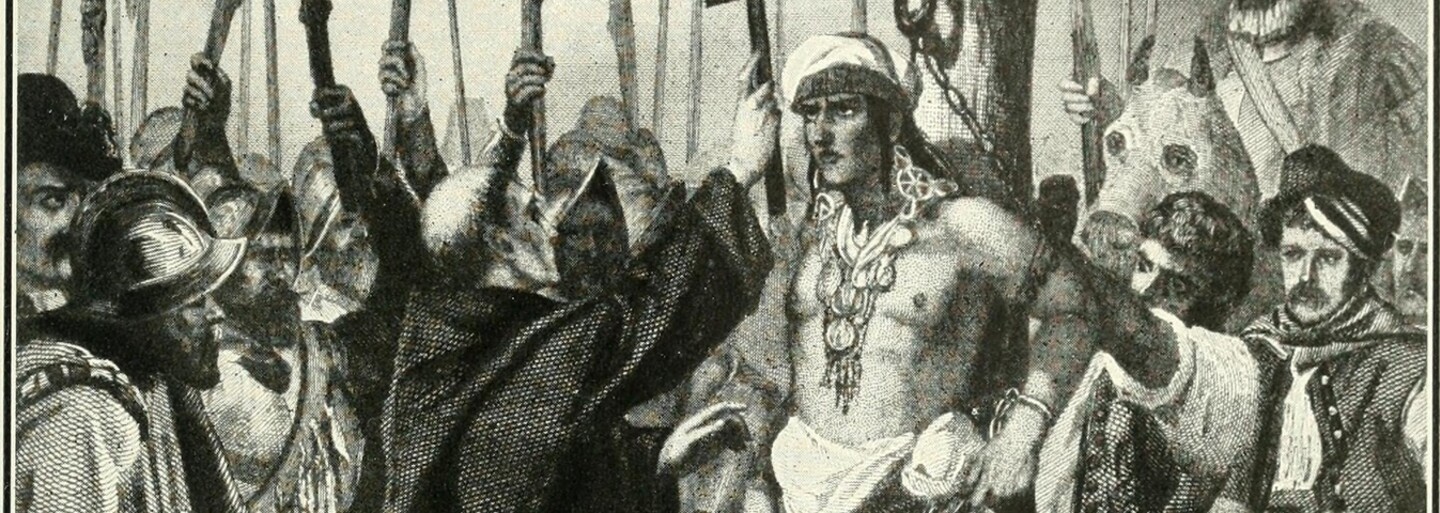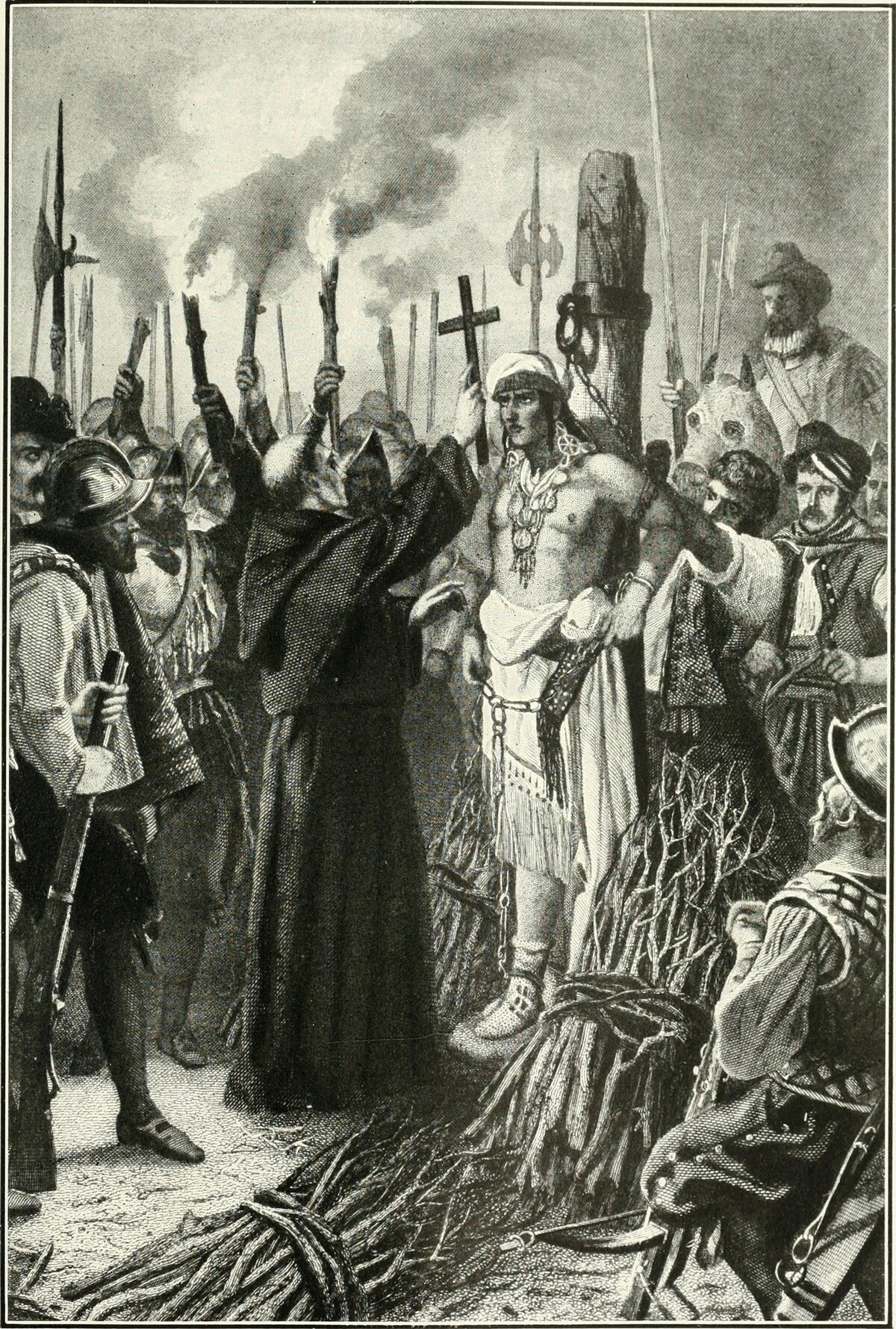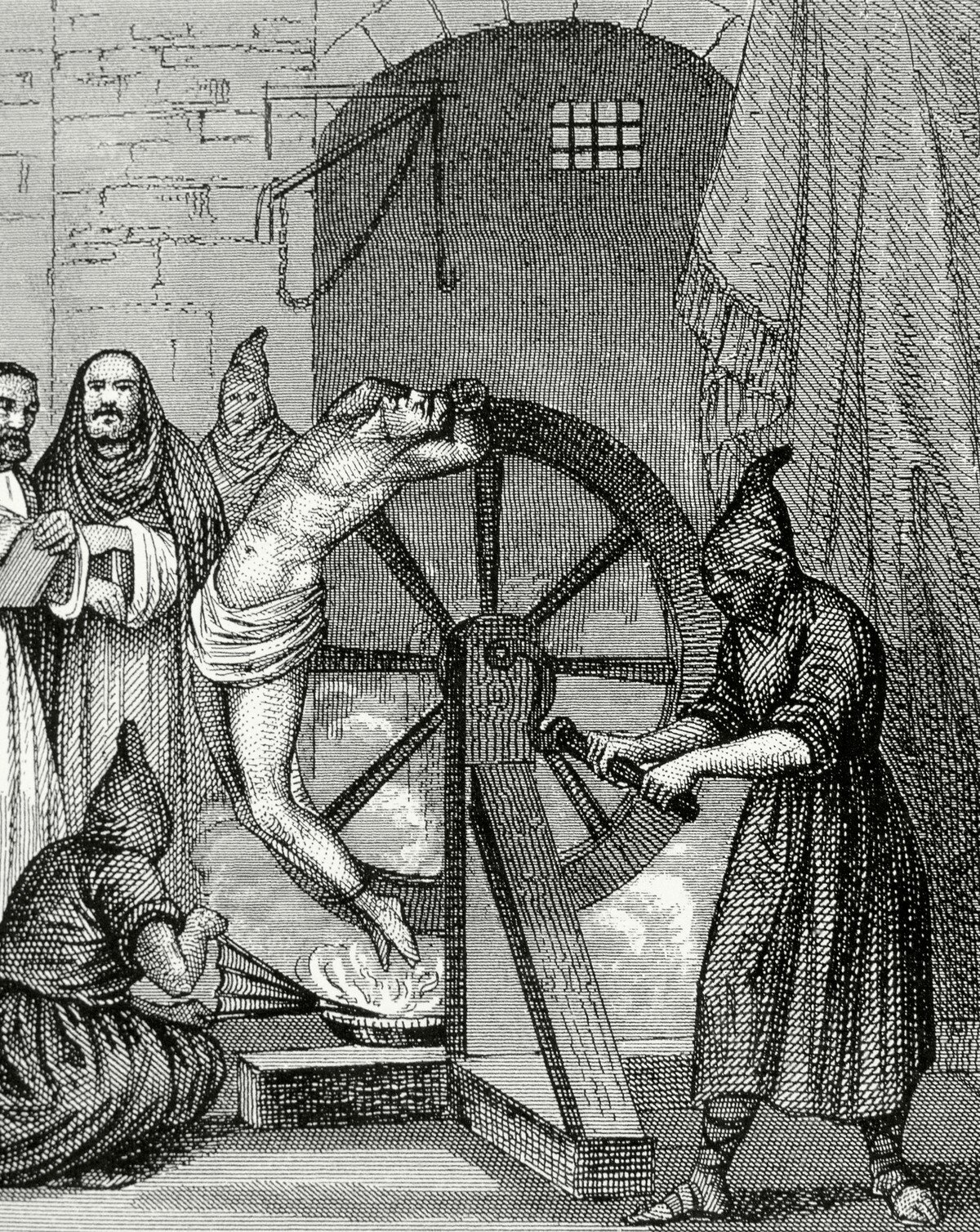 Emmie Makes A Living As A Dog Sled Guide: Rich Norwegians Like To Rummage Through Garbage To Save Hundreds Of Euros
Emmie Makes A Living As A Dog Sled Guide: Rich Norwegians Like To Rummage Through Garbage To Save Hundreds Of Euros
Emmie Makes A Living As A Dog Sled Guide: Rich Norwegians Like To Rummage Through Garbage To Save Hundreds Of Euros
Emmie Makes A Living As A Dog Sled Guide: Rich Norwegians Like To Rummage Through Garbage To Save Hundreds Of Euros
History of Torture: The Cruelest Executions, Cracking Bones and Blood Everywhere
What did those who broke the law have to go through historically?
If problems persis, please contact administrator.

Death penalty has been in existence ever since the beginning of times and is almost as old as humanity itself. Although it has been abolished in most countries by now, its implementation is still relevant in some places of the world - for example, USA or the Democratic People's Republic of Korea. Even though executions in recent decades have been carried out in a relatively humane way - most often by using lethal injection - in the past, the emphasis has been on the longest and greatest suffering of the convict.
Execution pole stabbing

Let's start out sharp (literally). For every unfortunate human being who had to be punished this way, a sharpened wheel was thrust into his rectum and pushed with such great force in order to get its pointed end to come out the other side through the mouth. Since most people did not have the necessary strength to perform this, they often used oxen and horses for help. Depending on the thickness and sharpness of the blade, as well as the direction of the wheel, the victim either died immediately, or in a few days. Most often due to an injury to internal organs. It all depended on whether the act was performed with sufficient precision with emphasis on the least possible internal injuries. Women and children were usually punished this way around 522 BC, when Duke Darius the Great ordered three thousand Persians to be stuck on the poles. The legendary count Dracula can be considered a great pioneer and supporter of this style of torture. In 1917, Red Guards soldiers were also punished this way.
Crucifixion

Most of us associate this method of slaughter with Jesus Christ. In antiquity it was the most popular form of execution, especially in ancient Rome at the time, that has adopted this method from North Africa. It was the most humiliating punishment applied on rebels, pirates or slaves, to send them to the other world. The act itself was preceded by stripping the victim naked, whipping and attaching the horizontal wooden part of the cross, so-called patibulum, to the convict with nails in the wrist area. Not the palm, as often shown, to prevent the muscle from tearing under the weight of the body. The feet were nailed to the vertical part of the cross (also called the stipes), which was firmly placed in the ground. On top of that, the convicts shins were broken, so that he/she couldn't stretch more comfortably on the cross to make breathing easier. The victims died of suffocation. The crosses took various forms, in the shape of the letters X, Y or T for example . In the case of wet soil, it was necessary to set the base of the cross deeper into the ground. Therefore the convicts had to be crucified upside down. Allegedly, this is how St. Peter was crucified. The crucifixion had a comeback during the Second World War, when the Germans used this method to execute the Jewish population.
Garrotte
Dating back to the beginning of 17th century, this method originates in Spain. The principle is that the convict sat with his hands tied behind his back and had his head held in place by an iron tuft. The executioner then screwed a large iron screw into convict's head by turning a pulley on the back of the chair, which crushed the neck. Another variant was a strong metal wire, slowly tightening around the victim's neck, which ultimately strangled him. Later, another type of garrote appeared, in which two tonearms with a counterweight at the end were attached to the screw. A gentle pull was enough to break the windpipe and larynx almost instantly with a rapidly rotating screw. There was also a lump capable of crushing the victim's brain, on the garrote. Yet another version was a garrote with two rings - one moving forward and the other backward, putting pressure on the vertebrae, which eventually broke, severely damaged the spinal cord, resulting in an immediate death. The last country to use this tool was Andorra, until 1990. Today it is reportedly still popular, especially in the French Foreign Legion and other military groups, where it is used to obtain confidential information.
The breaking wheel

Who knows what the inventor of a wheel would think if he knew that, in addition to technology, his invention also found application in torture. A modified wheel was allegedly invented for this purpose by the ancient Greeks, but it was used mainly in the Middle Ages. It was actively used until the 19th century. The torture instrument consisted of a wheel containing a large number of strings to which the convict was attached. In most cases, it broke in two ways. The first, popular especially in the area of today's Germany and Czech Republic, consisted either of leading the first shot to the throat, which broke the ligaments, or from below, when first the limbs were broken, followed by the ribs and the spine. The second variant was especially popular in France. The convict's limbs were pierced with a stick, or an iron rod, which eventually broke his ligaments. Subsequently, the entangled victim, together with the wheel, was hung on a high pole, where he died in excruciating pain. If he did not end up as bird food and miraculously survived, his tissues were so torn and his bones so broken that any further movement was absolutely impossible.
Skaphism
The old Persians undisputably excelled in the level of imagination which they used to invent various torturous techniques. For me personally, the cruelest of them all is skaphism. With this type of torture, the convict was tied naked to the ship, facing up and forcibly fed milk and honey. These two ingredients don't mix well, so the result was considerable nausea. To make matters worse, honey was applied to the armpits and groin as well. The combination of honey and excrements of the victim attracted insects, that enjoyed these areas happily, laying some eggs in exchange as well. Death was caused by gangrene, dehydration and starvation.
Skinning
The mention of this punishment first appears in Akkadian code (Mesopotamia region) written sometime around 1900 BC. This punishment gradually spread to other countries and was applied against the enemies of the state. The oldest relic depicting skinning comes from Assyria. The Persians allegedly executed the Roman emperor Publius Licinius Valerianus this way. In Persia, the skin was only removed from some parts of the body, so the martyr, unlike his "colleagues" from other countries, survived, although in great pain. From Persia, the skin removal spread out to Rome and Greece. According to Herodotus, evil judges were skinned and their skin was used to cover the chair of their successor. This was known to all of Anatolia, China, Mongolia, and Japan, practiced even by the Aztecs and Incas. Aztecs skinned prisoners and dressed in their skin during rituals.
Caligula's games
In addition to wasting the wealth of his enormous empire with his reckless life, the Roman Emperor Caligula also showed his cruel side, especially in connection with gladiatorial fights. If the match lasted too long, the opponents had to stab each other and in order for the "fun" to continue, they brought more people in. He needed at least two dead people per hour to entertain the audience. If someone refused to obey the emperor's order, they brought a dwarf into the arena, who killed the gladiator without mercy, in the most painful way possible. After each match he burned the word "gravedigger" with his hot curler on the genitals of the defeated. In the case of no reaction, he judged gladiator dead and slammed his head with a hammer to release his soul. If the gladiator was still alive but badly wounded, they would drag him to the "finishing room" where a professional butcher finished him with a meat mallet. If you had lived at the time of Caligula's reign, you could have been executed for no particular reason. Caligula executed his own cousin Ptolemy, simply because he wore a red cloak. His insensitivity to the sight of blood was so great that he tortured or executed people just for fun while enjoying some good food himself.
Stoning

One of the oldest ways of death has been known for thousands of years. It is first mentioned in the 24th century BC in the laws of Urukagina, according to which a thief or a polyamorous woman could be stoned. It was an act of cleansing, which Muslims still believe in today. Even an ox that attacked someone could be stoned. In the Arab states, stoning was used as a form of punishment for rape, seduction or homosexuality, for example. To this day, this method of death is very popular in Iran. The man is buried up to the waist, the woman up to the neck. Anyone who wants can throw stones at the victim unless the person either dies or escapes. In that case, it means he/she is free.
Disembowelment
The convict's abdomen would be cut crosswise and his internal organs and intestines pulled through the opening. A man disfigured in this way suffered great pain for several hours, or even days until he passed. If they wanted to alleviate his suffering, they'd also remove other organs. In Persia, the intestines would be wound on a wooden cylinder. Another method was transanal dissection, during which the intestines would be pulled through the rectum. This custom was later revived by Protestants during the religious wars in France.
If problems persis, please contact administrator.















